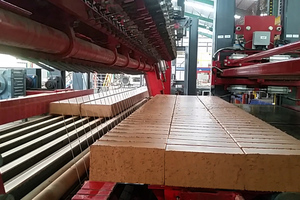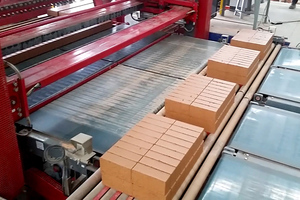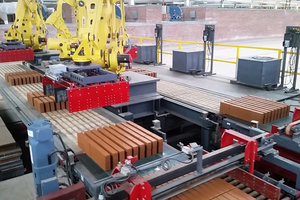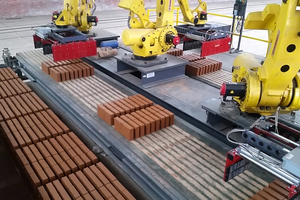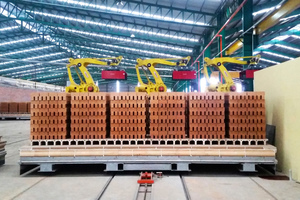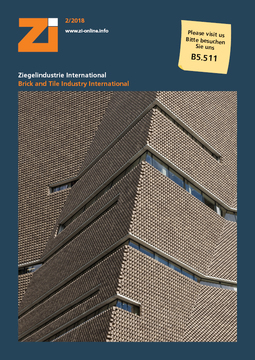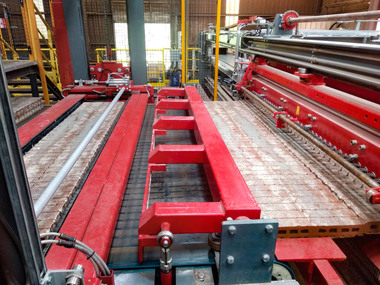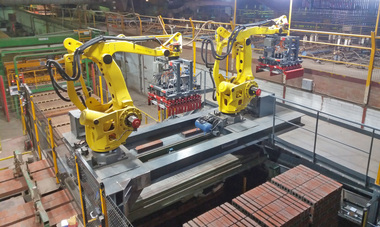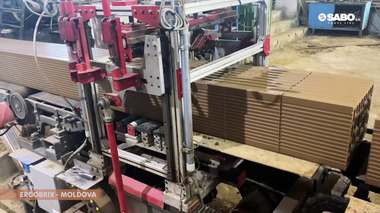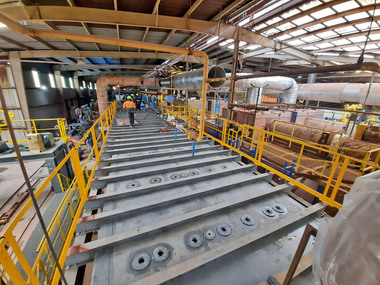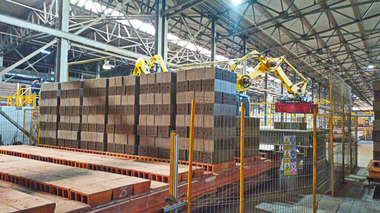Sabo S. A. commissioning a new project in Malaysia
The production capacity is planned with up to 700 t/day, up to 30 000 units/hour (based on the traditional solid Malaysian standard bricks in the size 215 x 100 x 65 mm at a weight of 2.4 kg). This makes the new brick plant one of the largest in Malaysia.
Sabo has supplied all the handling machines from cutting up to the setting station, the robotized dehacking system as well as a part of the transport of kiln cars between the hacking and dehacking lines.
Cutting and setting
The line is equipped with two large extruders, one to be used as a stand-by machine. The line has been designed to work either with one or two extruded slugs, which enables high capacities. The slugs are doubled by a special cutter upstream of the actual cutter. The cutting line and the doubler are therefore able to accommodate both extruders by moving some machines on rails to the appropriate positions in front of the extruders. A large 36-brick push-through cutter able to cut two slugs performs the cut. This special machine is a large robust machine able to perform the cut on a stiff extruded slug. Special attention has been given to the fast wire change by equipping it with a motorized movable wire harp that is automatically activated to bring a new set of wires to the cutting position when a broken wire is detected. The whole procedure is done automatically and in a way that avoids the extruder stopping. The machine is designed to be able to adjust the wire inclination for achieving a more effective cut. Moreover the system is equipped with a wire-moving mechanism and wire cleaner, resulting in a better quality cut.
After the cutter, the wet bricks are moved by means of a duplication gripper which can also position two 36-piece groups of wet bricks face to face.
The rest of the line is a series of programming belts to separate and program the layers. The line is designed to minimize the handling of bricks but at the same time to achieve high capacities. For this reason, mainly belts have been used. The bricks are spaced by means of four spacers that lift and separate the bricks with consecutive moves. The spacing mechanism can accommodate many different brick dimensions based on different programmes.
Three large 700-kg-payload robots placed in line set the bricks in an edge-to-edge setting on the 6 300 x 4 200-mm kiln car. The robots handle two layers at a time and with an extra move cross each layer separately to achieve better setting stability.
Apart from the usual places for receiving the cut-offs, belt conveyors have been placed in several places below the machines for easy cleaning.
Dehacking
Robots are also used for unloading the kiln cars. Two robots dehack the cars and set the bricks on two programming chain conveyors. The programming conveyors create the layers and bring them to the two packaging robots. They are designed to allow the formation of two different rectangular-shaped layers that are placed alternately on the wooden pallet to form the pack. This ensures better pack stability in comparison to the normal squared layer pack setting. The two packaging robots set the pack layer by layer in an edge-to-edge setting. These two robots also handle the empty wooden pallets, transferring them from a nearby pile to the final chain conveyor. The layers are gripped from all four sides to ensure better and more secure handling of the bricks and a tight pack. After the bricks have been packaged on the wooden pallet, the pallets are then transferred on a chain conveyor to a stretch film wrapping machine where they are wrapped in stretch film. Finally, they are transferred to the final chain conveyor to be picked by the forklift.
The line is completed by kiln car handling equipment between the hacking and dehacking line.
Sabo S.A.
www.sabo.gr

